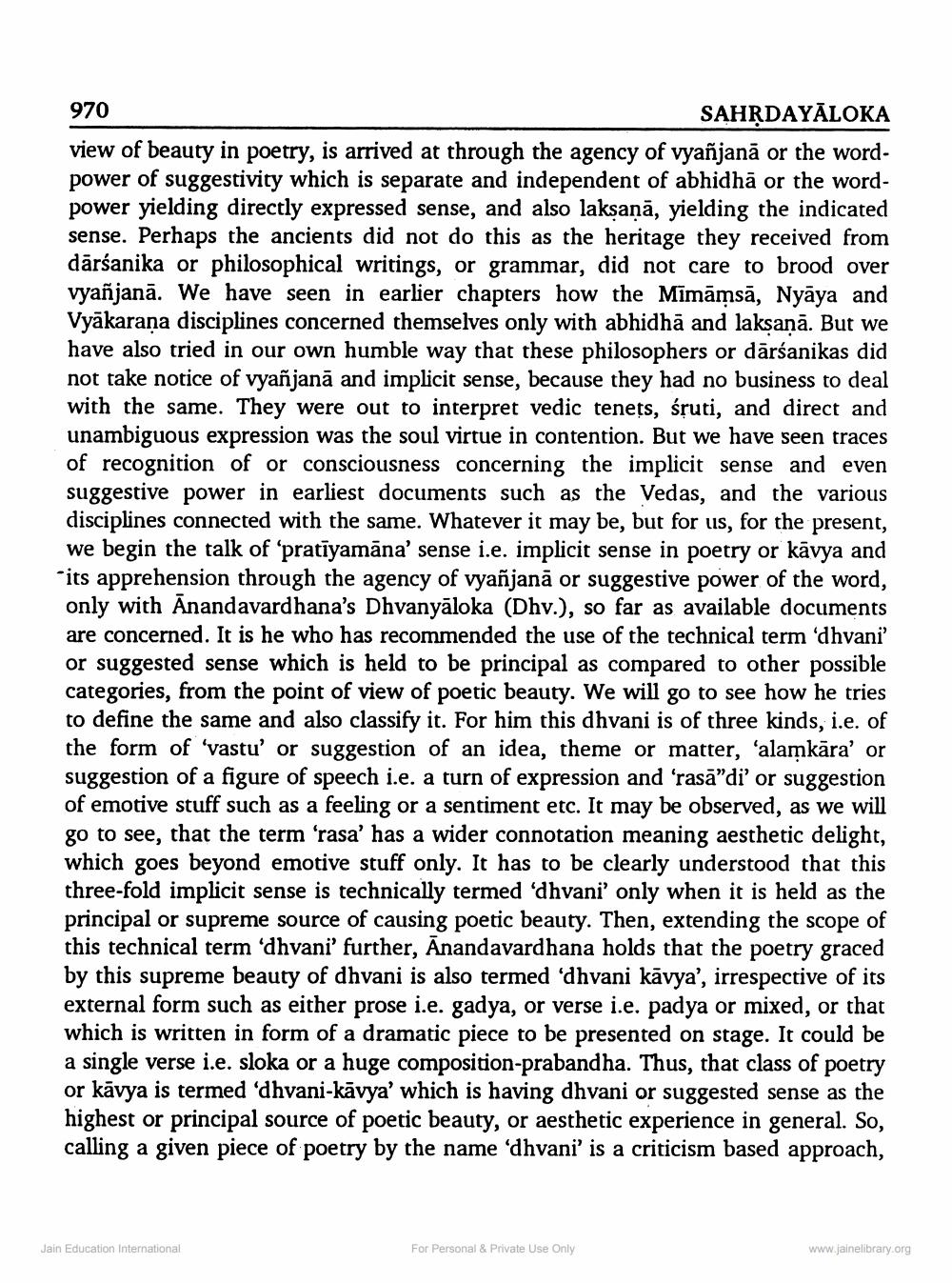________________
970
SAHRDAYĀLOKA view of beauty in poetry, is arrived at through the agency of vyañjanā or the wordpower of suggestivity which is separate and independent of abhidhā or the wordpower yielding directly expressed sense, and also laksanā, yielding the indicated sense. Perhaps the ancients did not do this as the heritage they received from dārśanika or philosophical writings, or grammar, did not care to brood over vyañjanā. We have seen in earlier chapters how the Mimāmsā, Nyāya and Vyakarana disciplines concerned themselves only with abhidh, and laksanā. But we have also tried in our own humble way that these philosophers or darśanikas did not take notice of vyañjanā and implicit sense, because they had no business to deal with the same. They were out to interpret vedic tenets, śruti, and direct and unambiguous expression was the soul virtue in contention. But we have seen traces of recognition of or consciousness concerning the implicit sense an suggestive power in earliest documents such as the Vedas, and the various disciplines connected with the same. Whatever it may be, but for us, for the present, we begin the talk of 'pratīyamāna' sense i.e. implicit sense in poetry or kāvya and its apprehension through the agency of vyañjanā or suggestive power of the word, only with Ānandavardhana's Dhvanyāloka (Dhv.), so far as available documents are concerned. It is he who has recommended the use of the technical term 'dhvani' or suggested sense which is held to be principal as compared to other possible categories, from the point of view of poetic beauty. We will go to see how he tries to define the same and also classify it. For him this dhvani is of three kinds, i.e. of the form of 'vastu' or suggestion of an idea, theme or matter, ‘alamkāra' or suggestion of a figure of speech i.e. a turn of expression and 'rasā"di' or suggestion of emotive stuff such as a feeling or a sentiment etc. It may be observed, as we will go to see, that the term 'rasa' has a wider connotation meaning aesthetic delight, which goes beyond emotive stuff only. It has to be clearly understood that this three-fold implicit sense is technically termed 'dhvani' only when it is held as the principal or supreme source of causing poetic beauty. Then, extending the scope of this technical term 'dhvani' further, Anandavardhana holds that the poetry graced by this supreme beauty of dhvani is also termed 'dhvani kavya', irrespective of its external form such as either prose i.e. gadya, or verse i.e. padya or mixed, or that which is written in form of a dramatic piece to be presented on stage. It could be a single verse i.e. sloka or a huge composition-prabandha. Thus, that class of poetry or kāvya is termed 'dhvani-kāvya' which is having dhvani or suggested sense as the highest or principal source of poetic beauty, or aesthetic experience in general. So, calling a given piece of poetry by the name ‘dhvani' is a criticism based approach,
Jain Education International
For Personal & Private Use Only
www.jainelibrary.org




